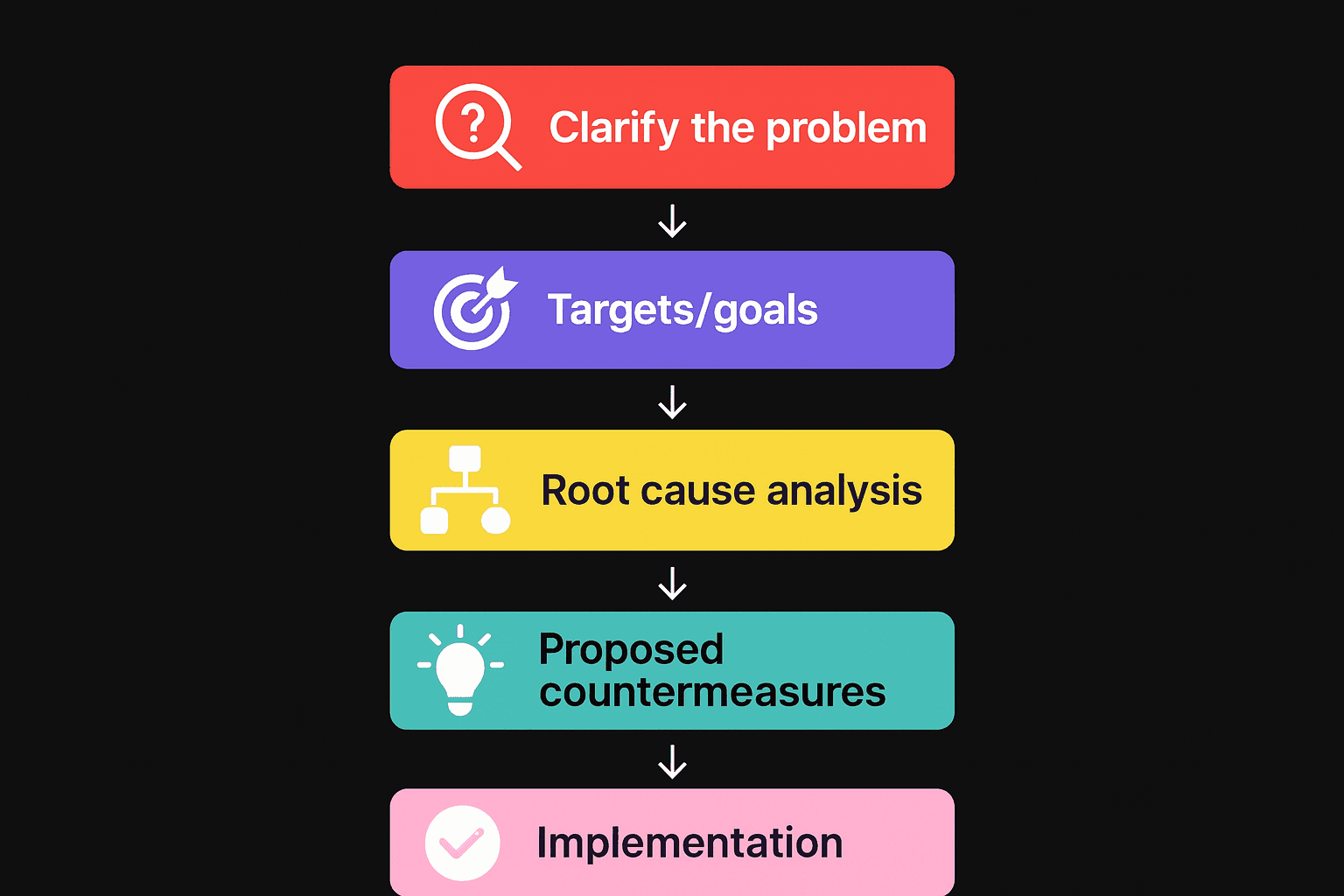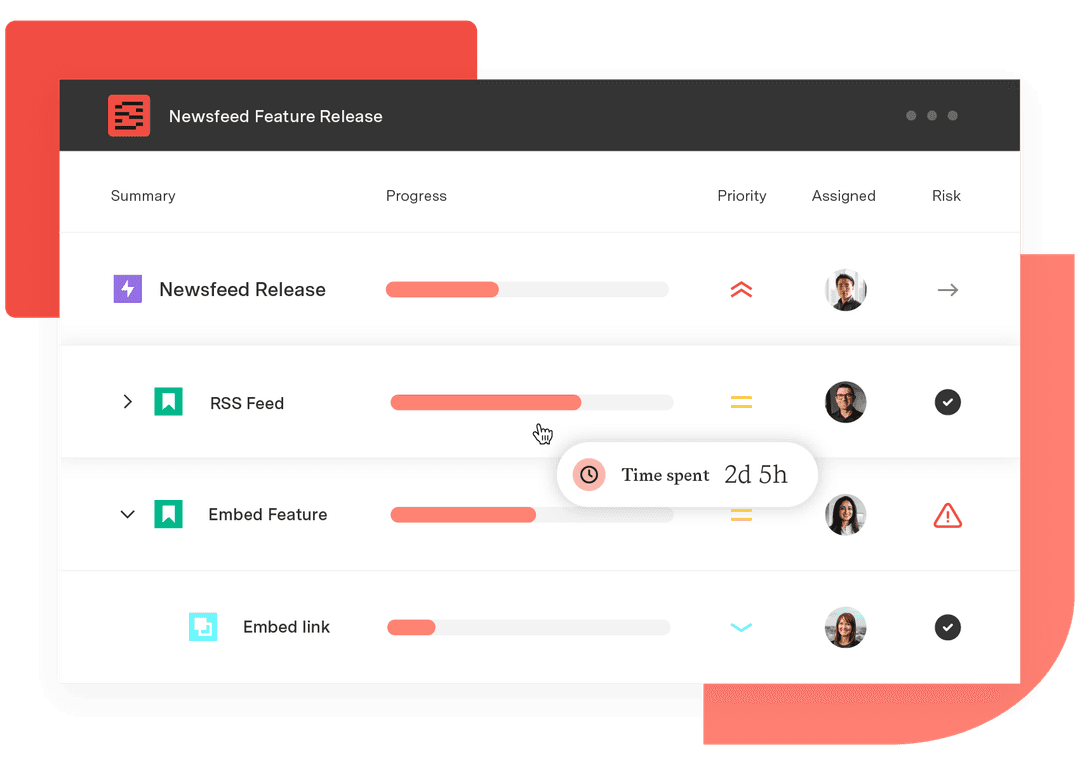A3 problem solving: Step-by-step lean framework
Tempo Team
When recurring issues disrupt your workflow or project outcomes fall short, sometimes it’s a sign that teams are reacting to symptoms rather than resolving root causes. Without a shared process for investigating problems, you can waste time, energy, and resources.
A3 problem solving offers a lean, structured approach to identifying and addressing issues at the source. It combines root cause thinking with concise, visual documentation to help teams reach alignment, track outcomes, and drive continuous improvement.
In this guide, we’ll explain what A3 problem solving is, how to use an A3 problem-solving template, and why this method is trusted by organizations that prioritize learning, clarity, and accountability. You’ll also see how Tempo tools like Timesheets and Structure PPM support lean thinking in Jira.
What’s A3 problem solving?
A3 problem solving is a methodology that helps teams resolve problems through root cause analysis and critical thinking. Named after the A3 paper size, this method distills a problem and its resolution into a single, visual document.
It was developed as part of the Toyota Production System to promote a culture of continuous improvement through concise communication and team-based learning. Instead of relying on lengthy reports or reactive fixes, the A3 quality improvement approach pushes teams to clearly define the issue, understand its context, identify the underlying causes, and develop countermeasures with measurable results.

Why use the A3 approach to solving problems?
Organizations turn to the A3 method because it makes problem-solving more scalable. Here are a few additional reasons why teams rely on this approach:
Encourages a standardized thinking process: Every A3 follows the same logical sequence – from defining the problem to proposing countermeasures. This structure ensures that issues are approached consistently, regardless of the team or department.
Keeps problem-solving concise and visual: By limiting the problem and its resolution to a single A3-sized page, the format forces clarity and brevity. It becomes easier for teams and other stakeholders to absorb the key insights and support the proposed path forward.
Promotes shared understanding and team alignment: The A3 process is collaborative by design. Rather than a top-down fix, teams work together to investigate the issue, uncover root causes, and build support for change. This often leads to better buy-in and execution of projects in their entirety.
Drives measurable results: Because each A3 includes defined outcomes and follow-ups, progress doesn’t stop when the paper is completed. Teams stay accountable and track whether the solution resolved the root cause over time.
Improves problem ownership and clarity: A3 documents clearly state who is responsible for solving the issue, what the problem is, and how progress will be tracked. This prevents vague action items or lost follow-through.
Aligns teams on facts, not assumptions: The A3 process encourages fact-finding through observation, data collection, and stakeholder input. This leads to better decisions in complex or high-stakes situations.
Strengthens collaboration and learning: Because A3s are developed and reviewed as a team, they encourage knowledge sharing and skill development. Teams learn how to ask better questions, challenge assumptions, and improve processes over time.
Supports continuous improvement at scale: As more teams adopt the A3 method, organizations develop a shared approach to tackling challenges, which in turn helps to build a culture of learning.
What’s an A3 problem-solving template?
The A3 problem-solving template provides a visual, standardized format to walk through each stage of the process. While variations exist, most templates follow this general structure.
Problem background and context
Begin by clearly defining the problem. What’s happening, where, and to what extent? Provide data or observations that describe the issue and explain why solving it matters. This helps establish urgency and a shared understanding.
Targets/goals
Clarify the desired outcome. What specific metrics or performance levels should be reached? Setting goals ensures that proposed actions can be measured against defined success criteria and helps focus problem-solving efforts.
Root cause analysis
Identify the underlying factors driving the problem. The root cause analysis system represents the heart of A3 thinking – solving the real issue, not just treating outcomes. Tools like the 5 Whys or fishbone diagrams are often used to dig beyond surface symptoms.
Proposed countermeasures
Once the root cause is clear, outline targeted actions that will prevent recurrence. Include specific steps, responsible owners, timelines, and success metrics. This section may also highlight any trade-offs or risks.
Implementation
Detail how and when the countermeasures will be carried out. Include plans for communication, change management, and any necessary training or resource allocation. Clear implementation plans help avoid delays and confusion.
A3s are concise, but that doesn’t mean they aren’t detailed. For example, an A3 report can also include sections for current state versus future state, follow-up results, and lessons learned, so long as all the information fits on one single-sided page.
Support lean decision-making and clarity with Tempo
Applying A3 principles is easier when teams have the right tools to capture, track, and align their efforts. Tempo's Jira-native solutions, like Timesheets and Structure PPM, help teams implement lean thinking across projects and departments.
Structure PPM provides a flexible hierarchy for organizing Jira issues by project, goal, or priority. Teams can map current state workflows, visualize countermeasures, and track implementation progress – all within a shared structure that reflects A3-style clarity.
Timesheets ensures teams can measure the impact of their countermeasures by capturing time spent on specific tasks. Whether it’s root cause investigation or testing new solutions, effort is tracked transparently. Approval workflows and reporting help teams evaluate what worked and adjust based on real data.
By embedding A3 into existing Jira workflows, teams can stay focused on facts, aligned on action, and committed to long-term improvement without switching tools or losing context.












































